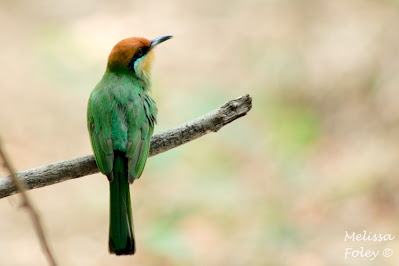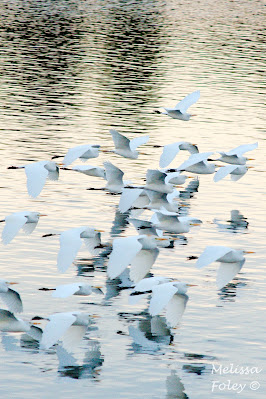After our narrow escape from the Busanga Plains area of Kafue, we headed to McBride's Camp situated on the Kafue River on the eastern side of the park. Even though we had likely made the correct decision due to the rain, it was a bit of a bummer to miss out on the pontoon river crossings and to have to retrace our steps through much of the park and all the way back to Mumbwa. We took advantage of going back through town to top up on a few supplies, including some fresh greens from a roadside market stall, which felt like a rare treat. We also purchased some loquats, the fruit the bats love to eat, but we were not all that impressed with them. If they were perfectly ripe, they were good, but they have almost no flavor if underripe and a mealy quality if overripe.
We arrived at McBride's Camp a bit road weary and were immediately welcomed by the McBride's themselves, Charlotte and Chris. Charlotte had just returned from a roundtrip to Lusaka, meaning she had been in the car as long as we had that day. They immediately whisked us out to the sitting area overlooking the river to hear our stories, all the while interjecting natural history tidbits about this place they have called home for 23 years. We soon learned that prior to running the camp, Chris had spent much of his life studying lions in Southern Africa and received his Master's degree from Humboldt State in northern California. He was very excited that we were familiar with his alma mater. Charlotte was clearly the one who kept everything running at the camp and was also an incredible naturalist herself, having grown up in the Zambian bush and accompanying Chris on most of his lion research expeditions. In our first conversation with the two of them, we learned about the spur-winged geese at the river, the palm tree thoughtfully planted by the near-resident elephant Jethro (via a dung pile), the juvenile fish eagle who was still finding his voice, the sleeping spots of the hippos throughout camp, and the sausage trees that resulted from the poo of those hippos. Within about 30 minutes, we had decided that we needed to stay an extra night because it was clear this would be a special experience.
We made our way to the campsites, which were situated at the far end of the property, set back from the river about 50 meters. We had the camping area to ourselves, complete with separate ablutions for each couple. There was a thatched shelter in camp, as well as another by the river, which was lovely for watching birds and the water go by. The acacia tree overhanging camp was in full bloom and teaming with sunbirds and bee-eaters. We also had a very shy blue duiker and a slightly bolder bushbuck that occasionally walked through the back of camp. A few monkeys rounded out the camp wildlife, which were fortunately less bold than the ones at Mvuu and Wildlife camps, where we had to secure everything, including our tent door, to prevent them from getting into our things.
Much of the next day was spent reading and bird watching, which was a welcome change from our long days in the car. The slow day afforded us the luxury of time to do things like fry up the raw groundnuts we had purchased in Mumbwa (one of Andrew's camp specialties) and cook a big pot of beans for dinner. In the afternoon, we went for a boat trip down the very shallow Kafue River on a double-decker pontoon boat. Almost immediately after leaving the dock, we had to interrupt a group of hippos that were lounging in the deep channel of the river. They were not happy to see us, but begrudgingly moved aside long enough for us to pass before returning to their spots. We saw a lot of birds on our trip, including the elusive finfoot, our boat's namesake and a rare water bird found only in pristine rivers. We also saw a malachite kingfisher, a bird that had been on Andrew's wishlist the entire trip. Our very skilled boat driver was able to get us some great views of the small, but colorful bird without scaring it away before Andrew and I could get our fill of photos. The trees lining the river were dotted with fish eagles every 60-70 meters and a flock of egrets skimmed the surface of the river just as the sun was setting. All this was accompanied by hot tea, a gentle breeze, and lovely scenery in every direction. When we returned to the dock, Chris was waiting for us and wanted to hear about everything we saw. He was sad we had not seen any lions or leopards. We returned to camp to find that our evening fire had been built up and our beans had been topped up with water and were cooking away over the fire.
which, unfortunately, do not yet have open bills like the adults)
and egrets on a grassy expanse along the river
The next morning we headed to the main lodge around 7 am to meet Chris for tea and a bushwalk. As we sipped our first cup of tea, Chris regaled us with more tales from his lion research and life in Kafue. We got up to leave and were encouraged to refill our mugs and bring them with on our walk. The previous evening Chris had mentioned that our walking route would be dependent on the whereabouts of a female elephant and her young calf, who had been seen around camp recently. In fact, we were warned not to walk on the road between our camp and the lodge after dark because we might accidentally stumble upon the pair. Chris assured us that "she was a lovely elephant but will kill you" if she felt threatened. Along with this warning, we also learned that elephant eyes do not shine when exposed to light, making them more difficult to see at night, hence the no walking rule.
Our walk started in the camp itself, and it took about 30 minutes to make it from the lodge to the parking lot, a distance of about 25 meters. We didn't mind one bit because the amount of knowledge that was being imparted was incredible. As we got to the parking lot, the ranger handed Chris his camera, rifle, and a fresh mug of tea. Chris didn't want to be saddled with the heavy rifle, so he handed his father's Rigby 0.416 caliber rifle off to Pete to carry. Chris assured Pete that he would do the shooting if we encountered a charging animal. As we walked along the road leading away from camp, we learned about civets, hippos, forest fire, and the vegetation. Not too far down the road, we came across recent elephant tracks, including some very small prints. Knowing the mama elephant could be nearby, we could proceed no farther on foot. I walked quickly back to camp to alert our driver, and he came in short order so we could continue our journey via vehicle. We were able to get out of the truck multiple times to inspect items of interest more closely, but always with an eye out for the "lovely" elephant, which we never saw.
When we arrived back at camp, the kitchen staff quickly approached Chris with a cardboard box, explaining that they found the animals on the ground. Inside the box were two baby genets, cat-like animals that live in trees. Finding the babies on the ground was a likely sign that something had happened to the mama. Chris quickly put the four of us in charge of the genets until Charlotte returned from the bush camp, which would not be for another 4 or 5 hours. He assured us that she would know exactly what to do. In the meantime, we did NOT know exactly what to do and one of the genets was not doing well. They were too small to eat solid food, so we asked the kitchen staff for a bowl of milk. They were not adept at drinking either, so Jenny ran back to camp to get the small syringe from the first aid kit. Pete and Jenny worked their magic and managed to get some milk into the weaker one and eventually into the more alert one as well. By the time Charlotte returned, the genets had learned to suckle from the syringe and had settled down for a nap. Charlotte, indeed, did know exactly what to do and quickly concocted a proper feeding solution that wouldn't upset their stomachs. Charlotte was now in charge and kept a close eye on them, including keeping them next to her bed so she could feed them every couple of hours throughout the night. We were able to get one last peak at them the next morning before we started our drive back to Lusaka. They were seemingly doing well and definitely in good hands.
Our final days in Zambia were spent back at Pioneer Camp outside of Lusaka, where we began our journey. J&A needed a few days to do some truck chores and restock provisions before heading north, and we needed to get our Covid tests before our flight home. We really enjoyed our time in Zambia and would go back in a heartbeat, especially to spend more time at McBride's Camp. It was great to spend time with J&A doing the thing they love. It gave us a window into their world and a better understanding of how they would be spending their next ten months in Africa. If you've enjoyed these posts and want to continue following J&A on their adventures, Andrew's blog is here.
Our flight home left one week before flights out of Zambia were stopped due to the omicron variant. We feel extremely lucky that we were able to squeeze this trip in between the delta and omicron variants, although having to spend a few more weeks in Zambia would not have been the worst thing...




















































